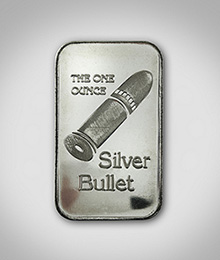Seashore paspalum: Finding the right plant for the right place
Seashore paspalum turfgrasses certainly offer a new option for golf course turf, but like all those that came before and those that will come after, there is no “silver bullet” turfgrass. The only places I know where “silver bullets” exist are in the Lone Ranger’s and werewolf hunters’ guns. In the world of golf and sports turf management, the best solution is “the right plant in the right place!”
The hard part is finding that “right plant” for your place. In the northern states, where cool to cold weather prevails, we have the bentgrasses, bluegrasses and fescues. In the southern states, bermudagrasses have generally prevailed over the years, with some zoysia varieties also in the mix.
Seashore paspalum offers another choice for warmer climates. Other attributes include: higher salt tolerance, better color retention, tolerance of low temperatures, less water and less nitrogen required and better tolerance to low-light conditions.
The modern varieties of seashore paspalum, released from 1999 to 2012, include SeaIsle 1, SeaIsle 2000, SeaDwarf, Salam, SeaIsle Supreme, Platinum TE and Sea Star.
John Holmes, owner of Atlas Turf Co., says there are about 300 courses worldwide using seashore paspalum. “Because of the low-light tolerance of the paspalum grasses, they are most often chosen for use in Southeast Asia due to the lack of bright sunlight during the monsoon season.”
In the U.S., this turf is found most often in coastal locations from Texas to as far north as Virginia Beach.
Seashore paspalum is also salt tolerant. This allows the construction of courses in places where fresh water may not be available either physically or politically.
Courses in the Bahamas and Caribbean are natural locations for this grass. In Florida, some courses with paspalum use deep wells to pump brackish water from the Lower Hawthorne Formation.
From an environmental sustainability point of view, it almost does sound like a “silver bullet” solution. In the real world however, even silver needs polishing to keep it looking good. The same is true with seashore paspalum.
One exception in Florida is a higher potential for disease activity in paspalum varieties versus bermudagrass. Some courses will program more fungicide applications as part of a preventative program, not normally needed on bermudagrass, except in cases of overseeding.
But generalized statements can always be contradicted. Tim Hiers, superintendent at the Old Collier GC in Naples, had discussed disease management with Jim Torba, from his time at the Wilderness GC in Naples, Fla. Torba said he never had to apply a fungicide on his SeaIsle 1000 turf.
One weakness of the paspalum turf that was verified by superintendents Ricky Reeves of the Miami Beach GC and Stuart Taylor of the Plantation G&CC in Fort Myers, was it’s tendency to thin out, especially on south-facing bunker slopes where there was poor moisture retention.
While that can be a general deficiency for all turf types, paspalum appears to be a little more sensitive. Hiers, who has consulted with both Reeves and Taylor about their paspalum issues, offered his explanation. “While it’s true that you can usually apply less water overall on a daily basis to paspalum, it needs a constant supply. The bermudagrasses are more drought tolerant overall. While the paspalum is quicker to ‘brown out,’ it is also quicker to green up when watered.”
As for appeal and playability, paspalum is noted for its uniform dense turf, giving it a visual “wow” factor. Developers, owners and members often put that “wow” factor on top of the decision making list when choosing which turf variety to install.









